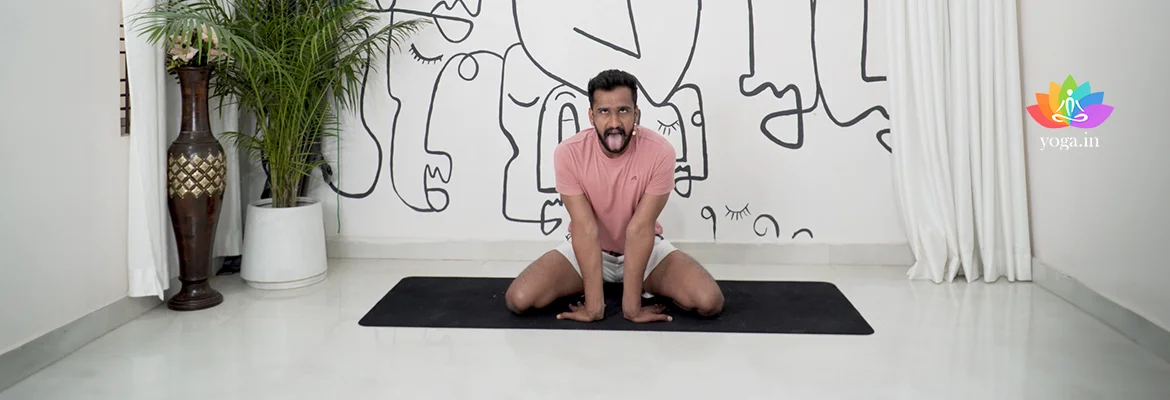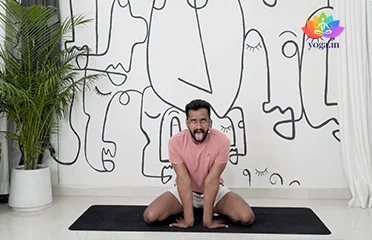Sit in Vajrasana and spread your knees.
Introduction to the Asana
The Sanskrit name is derived from Simha (सिंहा) which means lion and asana (आसन) meaning posture or seat.
Step to get in the pose
-
-
Move the weight of your body on your thighs and knees.
-
Your spine should be straight and as relaxed as possible.
-
Then, by bending forward, place your hands on the ground with your fingers facing in the direction of your body.
-
Now inhale and close your mouth.
-
Open your jaw as wide as possible and bring your tongue out with a forceful crisp “”haa”” sound as if a lion is roaring.
-
After roaring hold the pose for 20 to 30 sec.
-
To come back to a normal position, take back the tongue into your mouth, remove your hands from the knees, and stretch your legs.
-
Repeat this process about 4 to 6 times.
-
After doing Simhasana while taking the saliva inside the mouth, massage the throat lightly.
Common mistakes and pitfalls
-
Not doing on an empty stomach.
-
Not aligning properly in the posture.
-
Overstretching your mouth when roaring, causing tension in the mouth.
-
Tongue not stretching out.
-
Not keeping your focus steady.
Benefits
-
The best exercise for the eyes, tongue, throat and facial muscles.
-
Helps to soothe burning eyes and reduces eye strain.
-
Relieve ear problems.
-
Brings voice clarity.
-
Cleans the tongue and cures foul breath.
-
Gives relief from back pain
-
Opens the respiratory tract
-
Cures Thyroid issues.
-
Alleviates low blood pressure.
-
Improves digestion.
-
Relaxes the face muscle.
-
Relieves anxiety, stress and depression.
-
Helps to overcome fear and brings confidence and strength.
-
Stimulates the Vishuddhi chakra.
-
Delay aging effects.
Contraindication
-
Recent or chronic injury to the knees, face, neck or tongue.
-
Avoid if suffering from heart problems or high blood pressure.




